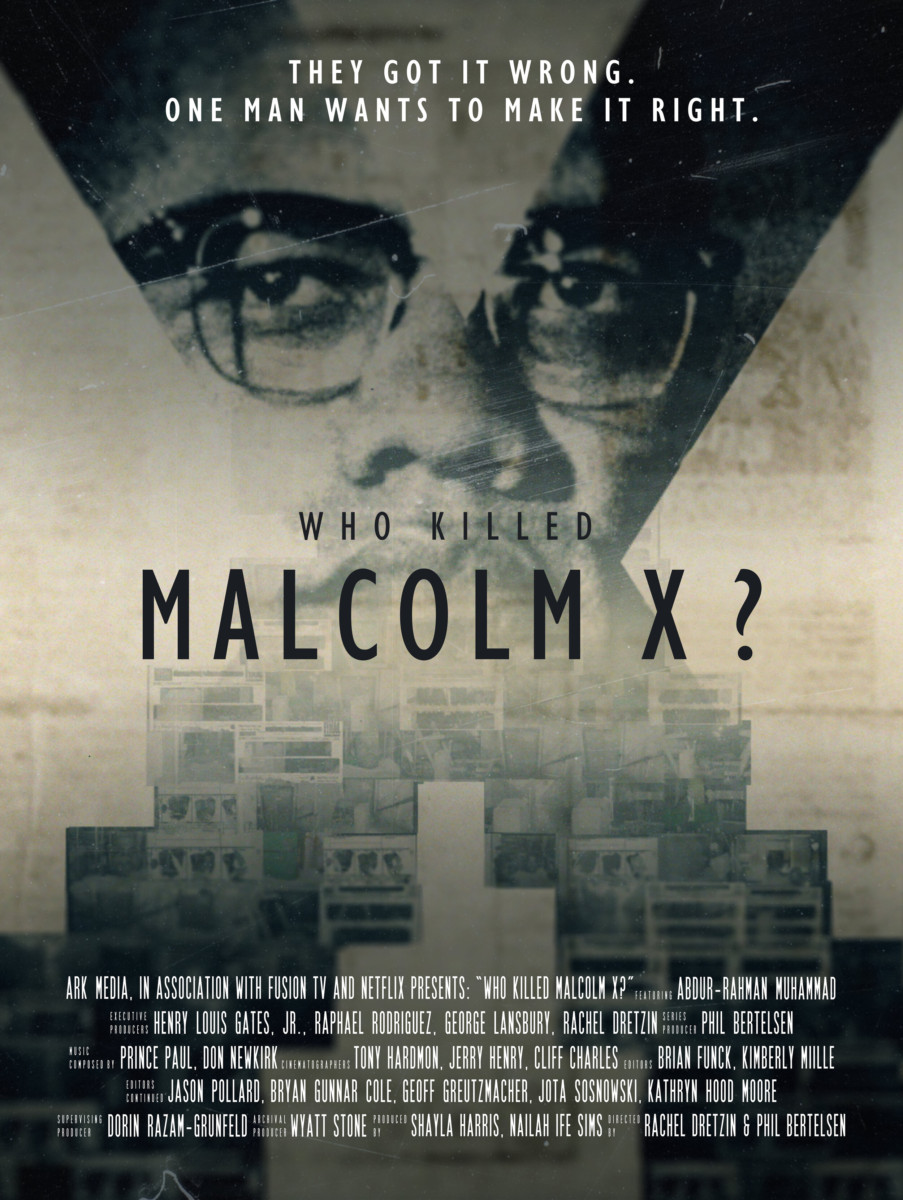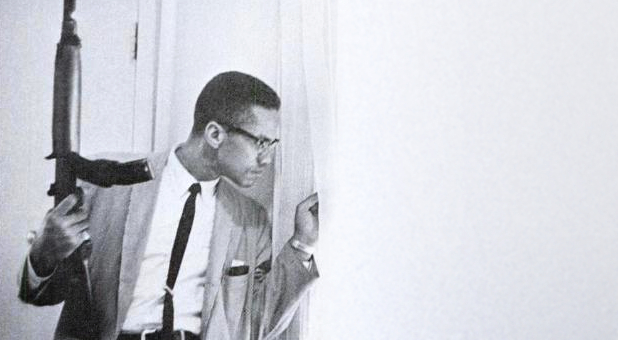
Some Call Film’s Assertion Bogus or Old News
The “Who Killed Malcolm X?” docuseries on Netflix is receiving scathing blowback from Malcolm X scholars critical of what they say is the black-on-black-crime framing of the series, which has been labeled in the mainstream media as containing “new evidence” that critics scoff is either bogus or has been in the public domain for decades.
“A Netflix documentary has presented new evidence about the assassination of Malcolm X,” CBS News declared a week ago.
Reporter Maurice DuBois asked series producer Phil Bertelsen what he would like to see happen. “I hope he gets exonerated,” Bertelsen said of Norman 3X Butler, now known as Muhammad Abdul Aziz, and one of those who served time for the killing. Producer Nailah Sims added that she hopes Aziz gets “a fighting chance to clear his name.”
“A fighting chance to set the record straight and rewrite history,” DuBois concluded in the Feb. 21 broadcast.
John Leland also wrote Feb. 6 in the New York Times, updated Feb. 7, of “new evidence.”
“Instead it points the finger at four members of a Nation of Islam mosque in Newark, N.J., depicting their involvement as an open secret in their city. One even appeared in a 2010 campaign ad for then-Newark mayor Cory Booker.”
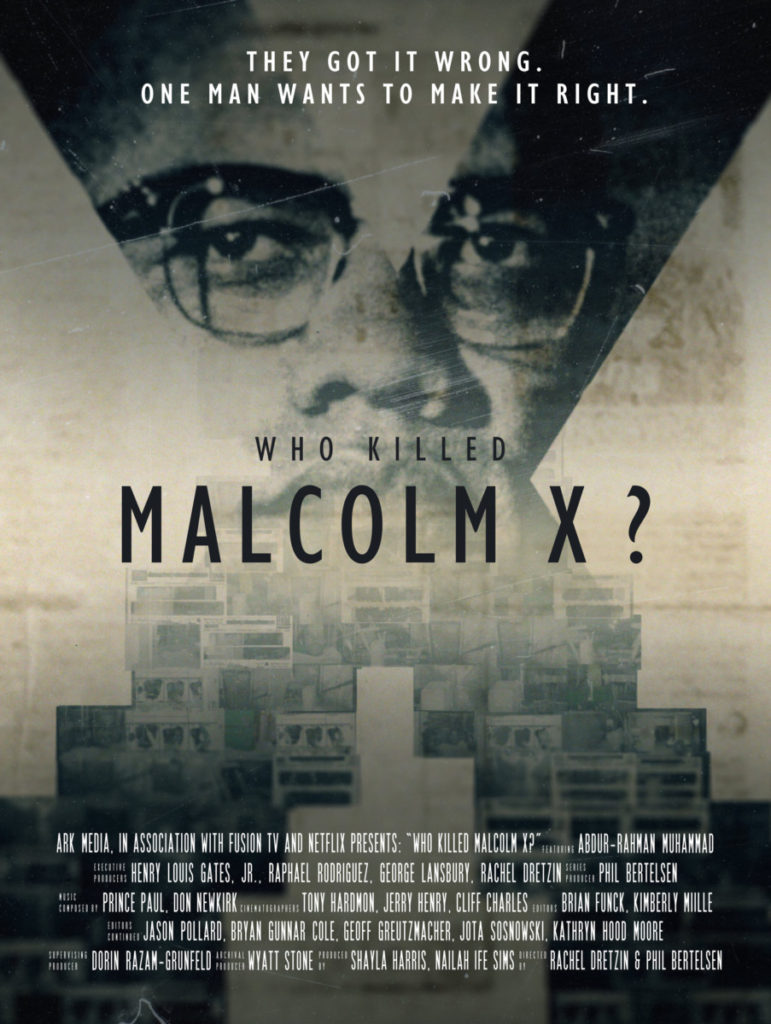
However, as this column reported in 2010, one of the four had already been fingered: “Abdur-Rahman Muhammad, a historian who writes for the Woodson Review and other publications of the respected Association for the Study of African American Life and History, identified the trigger man on his blog last month as William Bradley, about 72 years old, and known today as [Al-]Mustafa Shabazz.
“‘ ‘He is the man who fired the first and deadliest shot which ripped through the chest of the powerful Black leader on that cold 21st day of February, 1965,’ Muhammad wrote. ‘How ironic is it that “Willie” Bradley appears in a recent public safety campaign commercial for Mayor Cory Booker‘ of Newark?”
Other Malcolm scholars say that Aziz’s alibi — that he was not in the Audubon Ballroom when Malcolm was killed — is bogus, and that the crime was bigger than four members of the Nation of Islam mosque in Newark.
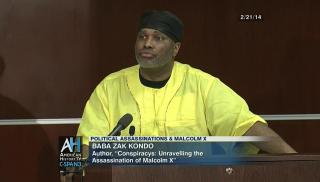 In 1993, historian Zak A. Kondo (pictured on C-SPAN), who teaches at Baltimore City Community College, wrote a definitive account of the assassination. Muhammad cited Kondo’s work in reaching his conclusions in 2010.
In 1993, historian Zak A. Kondo (pictured on C-SPAN), who teaches at Baltimore City Community College, wrote a definitive account of the assassination. Muhammad cited Kondo’s work in reaching his conclusions in 2010.
In his 1993 report, Kondo wrote, “This author contends that Malcolm’s murder resulted from three intertwined conspiracies,” according to a manuscript this columnist reported on at the time from Rochester, N.Y.
“The first was orchestrated by FBI agents who employed various schemes to oust Malcolm from the Nation of Islam, provoke a war between him and the NOI and to set up his murder.
“The second conspiracy — fed by the first — was orchestrated by the NOI hierarchy, was authorized by New Jersey Muslims to plan and execute the murder.
“The third was orchestrated by the New York City Police Department, which compromised Malcolm’s security, permitted all but one of the assassins to escape, and framed two innocent men.”
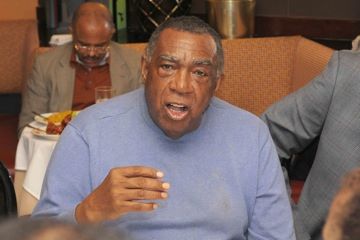 A. Peter Bailey (pictured, by Jason Miccolo Johnson) edited the newsletter for Malcolm’s Organization of Afro-American Unity, and appears in the Netflix documentary. He told the Journal-isms Roundtable this month that the film title’s question “Who Killed Malcolm X?” “was answered by Zak Kondo in 1993.” That’s when Kondo published his “ConspiracyS: Unraveling the Assassination of Malcolm X.”
A. Peter Bailey (pictured, by Jason Miccolo Johnson) edited the newsletter for Malcolm’s Organization of Afro-American Unity, and appears in the Netflix documentary. He told the Journal-isms Roundtable this month that the film title’s question “Who Killed Malcolm X?” “was answered by Zak Kondo in 1993.” That’s when Kondo published his “ConspiracyS: Unraveling the Assassination of Malcolm X.”
In fact, Kondo was interviewed twice by the “Who Killed Malcolm X?” team, in sittings totaling 12 to 13 hours, he told Journal-isms this week.
But Kondo’s role was reduced to that of a bit player in the film, he said, subservient to the story line that featured Mohammad.
“Decades after the assassination of African American leader Malcolm X, an activist embarks on a complex mission seeking truth in the name of justice,” the Netflix summary says.
Kondo told Journal-isms, “It seems that all they were interested in was the Nation of Islam. They were not interested in looking at the broader picture. . . . I was kind of shocked” on seeing the final product. He said he plans to update his 1993 book and have it republished in April.
Bailey, who has written and spoken extensively about Malcolm since the assassination, is working on a book about the international profile, particularly in Africa, of the man he calls “Brother Malcolm.” On two recent broadcast appearances, Bailey said that amid the tensions of the Cold War, the FBI and other American authorities were angered and embarrassed by the Soviets’ propaganda victories in the 1950s and ’60s amid worldwide coverage of how the United States treated African Americans.
Malcolm visited Africa and lined up support among leaders there for bringing the United States before the United Nations on human rights charges. Herb Boyd, a New York journalist and author, identified a black CIA agent who was shadowing Malcolm at the time.
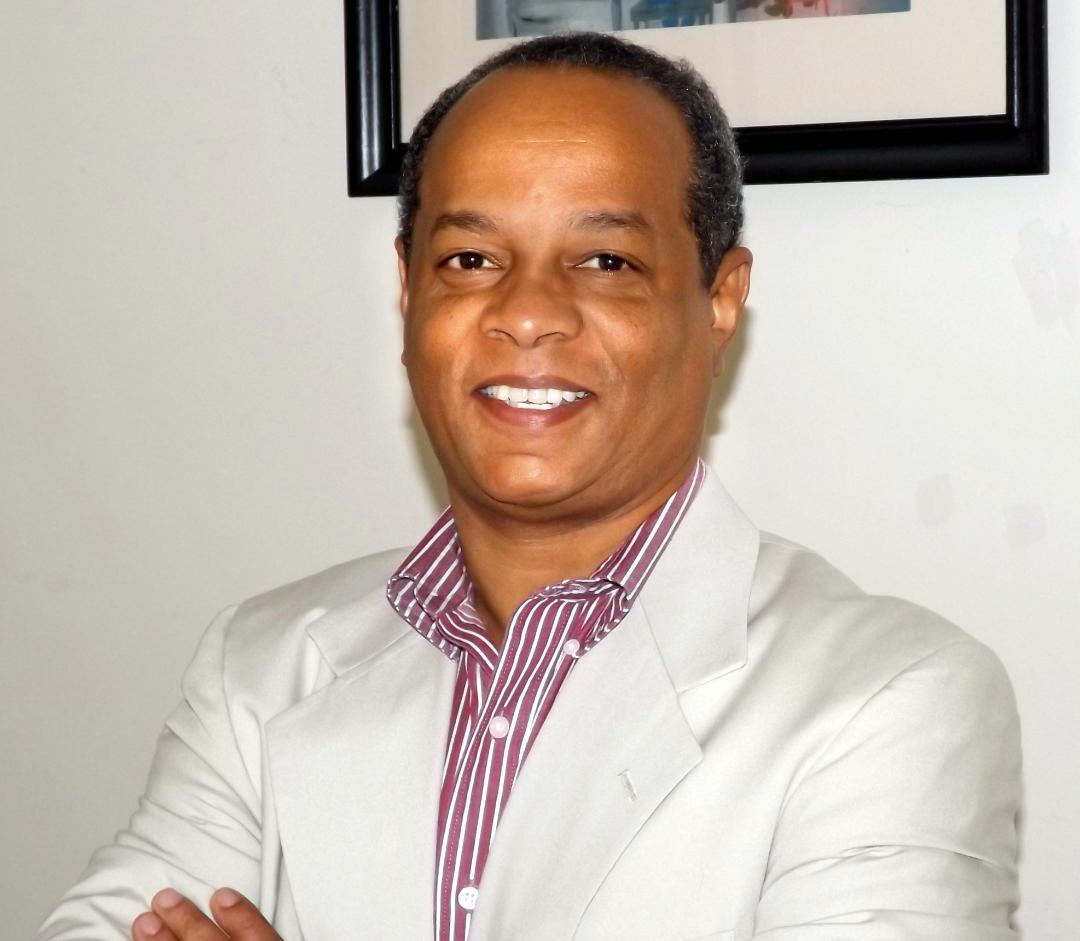 In the 1992 page-turner “The Judas Factor: the Plot to Kill Malcolm X,” author Karl Evanzz (pictured) tells how Assistant FBI Director William Sullivan circulated a memo urging that the FBI pick a “new national leader” once Martin Luther King Jr., Malcolm X and Elijah Muhammad, leader of the Nation of Islam, were destroyed. Others, including Bailey, also cite that same memo in suggesting a motive for government complicity in Malcolm’s killing.
In the 1992 page-turner “The Judas Factor: the Plot to Kill Malcolm X,” author Karl Evanzz (pictured) tells how Assistant FBI Director William Sullivan circulated a memo urging that the FBI pick a “new national leader” once Martin Luther King Jr., Malcolm X and Elijah Muhammad, leader of the Nation of Islam, were destroyed. Others, including Bailey, also cite that same memo in suggesting a motive for government complicity in Malcolm’s killing.
Evanzz, a former Washington Post researcher as well as an author, is perhaps the documentary’s harshest critic. He devoted at least one blog post to it.
“Some have asked why I wasn’t in the series,” Evanzz wrote Feb. 12.
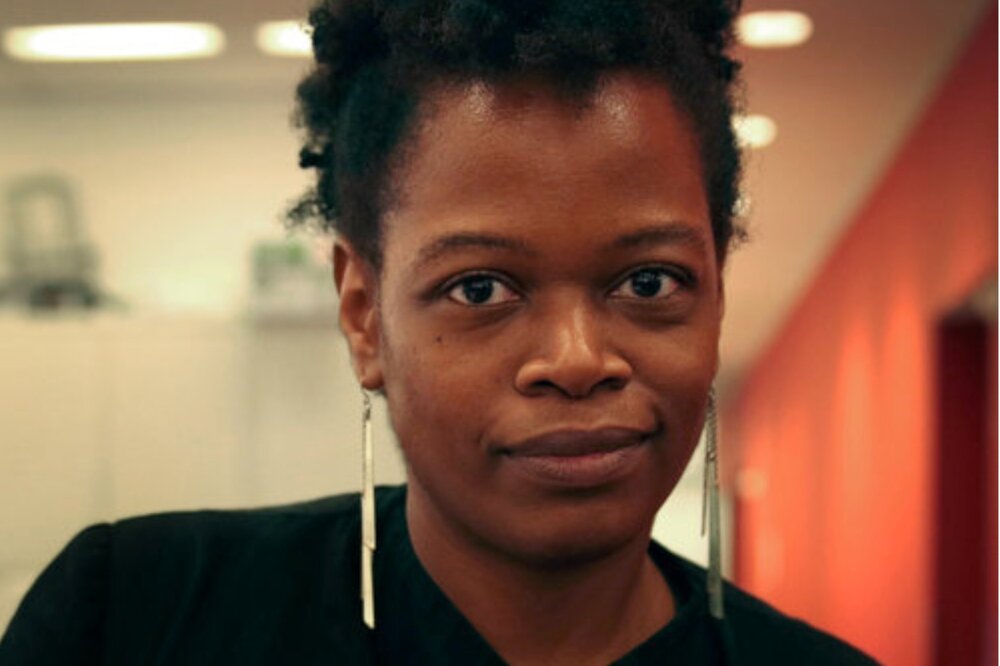 “I was asked by Shayla Harris (pictured), one of the African [Americans] behind the camera, to be interviewed for it, but I declined. Why? Because . . . I asked her whether certain people would be interviewed and the answer was what I expected, so I told her that I could not be part of it.
“I was asked by Shayla Harris (pictured), one of the African [Americans] behind the camera, to be interviewed for it, but I declined. Why? Because . . . I asked her whether certain people would be interviewed and the answer was what I expected, so I told her that I could not be part of it.
“The people I referred to are responsible for some of the most despicable lies ever cast on Malcolm X’s legacy.
“Despite data I sent to [Ark Media] via Ms. Harris, they chose to go with the erroneous proposition that all of the assassins were from New Jersey and that Butler was framed. They conveniently show the footage of William Bradley fighting to free [Thomas] Hagan, but they omit the footage of Norman [3X] Butler at the same scene.”
The last surge in interest in Malcolm’s assassination came in 2011, after the late Manning Marable, a historian at Columbia University, died days before the publication of the controversial book, “Malcolm X: A Life of Reinvention.”
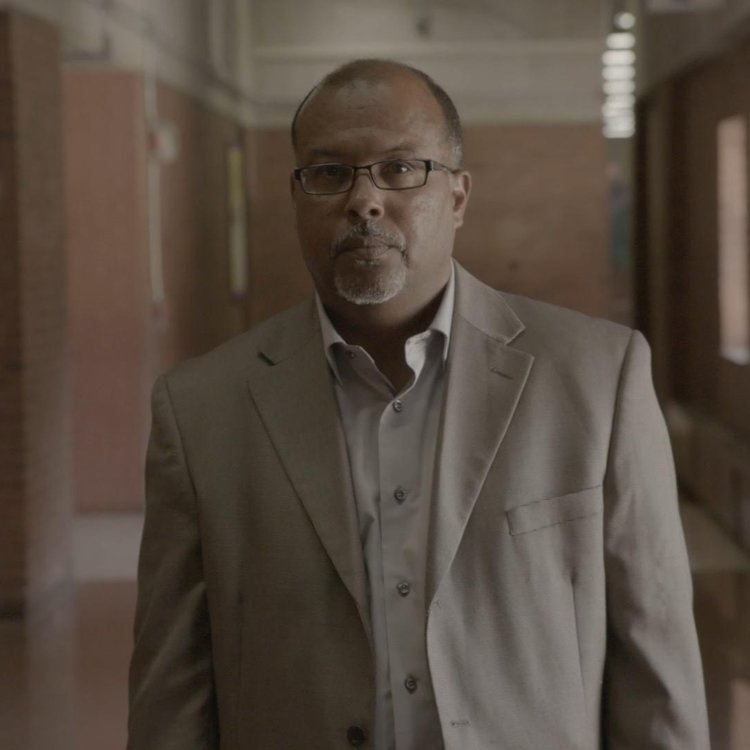
“One of Marable’s sources was none other than Abdur-Rahman Muhammad, the person at the center of the Netflix series,” Evanzz writes. “Muhammad claims that his obsession with Malcolm X’s murder ‘changed the trajectory of my life.’ The truth is that his life had no trajectory as far as anyone knows. He’s kind of fumbled his way through life until now.
“He has not written any books or lengthy articles about the assassination. He has only written one blog of note, and that was because a friend of his from Howard University led him to Bradley’s whereabouts. Everything else in the series is based on my books and the book by Zak Kondo. . . .”
The Innocence Project, which is handling the case of Butler, now known as Aziz, along with attorney David B. Shanies, insists that 81-year-old Aziz spent 20 years in prison for a crime he did not commit. He was paroled in 1985 and has maintained he was nowhere near the scene when Malcolm was killed, the “new evidence.”
However, Evanzz also writes, “In the linked video titled ‘The Black Zapruder Film: They Killed Malcolm X,’ skip to the sixteen-minute mark and you will see a black man wearing a tweed coat and black hat at a forty-five-degree angle wrestling his way through the crowd as Malcolm X is removed by stretcher from the Audubon Ballroom and taken to the hospital across the street.
“The man is none other than Norman 3X Butler. He lied in 1965 about not being involved in the assassination, and he has been lying about it ever since. . . . “
“African American researchers and scholars identified William Bradley as far back as 1993. Not one major newspaper reviewed Kondo’s book and only one reviewed my book, The Judas Factor: The Plot to Kill Malcolm X. Had they done so, Bradley might have been convicted for his role in the assassination.
“The media rarely listens when a black person exposes injustices. The public has to wait until the truth is discovered by a white person before it deserves attention, before it’s validated. . . .”
Danny Frost, director of communications for Manhattan D.A. Cyrus Vance Jr., told Journal-isms via email Wednesday, “District Attorney Vance has met with representatives from the Innocence Project and associated counsel regarding this matter. He has determined that the district attorney’s office will begin a preliminary review of the matter, which will inform the office regarding what further investigative steps may be undertaken. District Attorney Vance has assigned Senior Trial Counsel Peter Casolaro and Conviction Integrity Deputy Chief Charles King to lead this preliminary review.”
Casolaro was on the team that reinvestigated and dismissed the case of the Central Park Five, now known as the Exonerated Five.
Asked to comment on the criticism and provided with Evanzz’s comments as an example, the filmmakers said through a spokeswoman:
“Our goal with our documentary series, Who Killed Malcolm X?, was to explore lingering questions about how the case was handled and to examine numerous leads that were not pursued or investigated 55 years ago. Some of these leads might have spoken to the guilt or innocence of the accused, most notably Muhammad A. Aziz (formerly known as Norman 3X Butler) who served 20 years in prison for the murder.
“As with any controversial event, the assassination of Malcolm X can often veer into the realm of conjecture and rumor. For that reason, our investigation relied on a strict adherence to facts that we could corroborate with hard evidence or primary interviews with knowledgeable sources. We stand by the resulting six-part series, including all evidence and interviews therein.
“Karl Evanzz has written extensively about the death of Malcolm X, the Nation of Islam and the FBI’s surveillance of both. We offered Mr. Evanzz numerous opportunities to participate in this series and be asked rigorous questions on-camera about his knowledge. But, he refused. His current assertions about the reasons for that refusal [are] news to us.
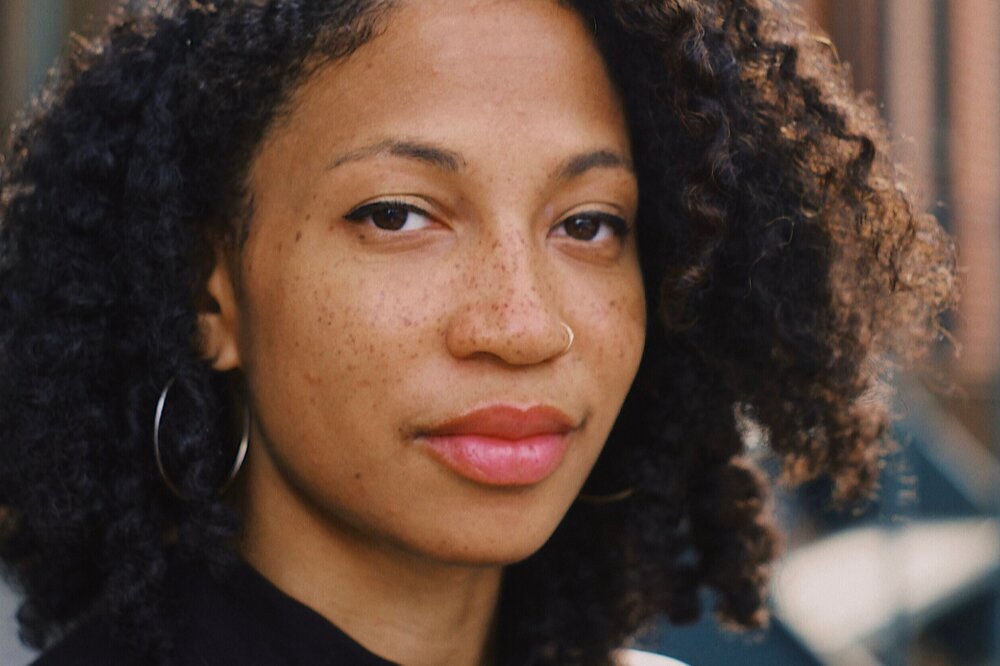 “We wish Mr. Evanzz continued success in his research endeavors. — Rachel Dretzin, Phil Bertelsen, Shayla Harris, Nailah Sims (pictured).”
“We wish Mr. Evanzz continued success in his research endeavors. — Rachel Dretzin, Phil Bertelsen, Shayla Harris, Nailah Sims (pictured).”
Despite his disappointment with the series, Kondo sees a bright side. “It’s got people’s attention,” he said by telephone. “I’ll take whatever I can get, and [perhaps it will] also take us to the truth of Malcolm X.”
Boyd, who co-authored “The Diary of Malcolm X” with Malcolm’s daughter Ilyasah Shabazz, agrees.
“One vital thing that could come from reopening Malcolm’s murder is the unsealing of police files on surveillance of Malcolm, some of which were released in 1993 but never reached conclusion, especially the way they tracked him from the spring of ’64 to Malcolm’s death,” Boyd said by email.
“To me, this was Malcolm’s most significant year given his travels abroad. And, to that end, I wonder if the new investigation would also include disclosure of the CIA surveillance. Reopening a case has to mean opening documents that have never been made available to the public and to scholars.
“As for my role in the documentary, I was lucky, I guess, to get at least a word or two in, and I may get a few more in the planned documentary on the relationship between Malcolm and Muhammad Ali by Netflix.”
Sept. 5, 2020, update: Peter Goldman, who met Malcolm X in 1962 when Goldman worked for the St. Louis Globe-Democrat and was later national affairs writer for Newsweek, was dogged in his determination to find out who killed Malcolm. He messaged Journal-isms on Sept. 4, 2020, weighing in on the Netflix series.
Goldman wrote, “I wasn’t what you’d call a fan of the Netflix series, even though, in the closing credits, I was listed as a consultant. I had a couple of working lunches with their team and got a bit cranky with them when they got deep into state conspiracy theories — most of which didn’t make it into the finished product.
“I don’t know if you’ve seen the third edition of Death & Life, but it lays out my conclusion as to who killed Malcolm X: a ‘special squad’ from the NOI mosques in Newark and Paterson, NJ, acting on orders from Elijah Muhammad and relayed by his son, Elijah Jr., known within the Nation as E-Two. I wish I felt otherwise. I liked Malcolm X, a lot. I regarded him as a powerful and necessary truth-teller. He deserved a far longer life and a natural death. A better death than his punishment for tattling on a philandering old man and his jealous sons.
“If there was new evidence in the series, I missed it. It seemed to me to spend a lot of wasted time on one man’s failed quest to confront the last surviving member of that special squad.”
- Jared Ball, imixwhatilike.org: ‘Alternative Media and Spaces’ and the Exclusion of Radical Politics
- Jerry Bembry, the Undefeated: The untold story of the inmate who helped shape Malcolm X’s future (Feb. 21)
- Todd Steven Burroughs, Drums in the Global Village: Netflix “Who Killed Malcolm X?” Doc: Nine Thoughts On Malcolm As CSI, Stagecraft Over Sincerity
- Andrew Stewart, Counterpunch: How Netflix And “Manning Marable” Killed Malcolm X (The Third Time)
- Jeanne Theoharis, Keisha N. Blain and Ashley D. Farmer, Ms.: Op-ed: An Open Letter to the Producers and Directors of Who Killed Malcolm X?
Facebook users: “Like” “Richard Prince’s Journal-isms” on Facebook.
Follow Richard Prince on Twitter @princeeditor
Richard Prince’s Journal-isms originates from Washington. It began in print before most of us knew what the internet was, and it would like to be referred to as a “column.” Any views expressed in the column are those of the person or organization quoted and not those of any other entity. Send tips, comments and concerns to Richard Prince at journal-isms-owner@yahoogroups.com
View previous columns (after Feb. 13, 2016).
- Diversity’s Greatest Hits, 2018 (Jan. 4, 2019)
- Book Notes: Is Taking a Knee Really All That? (Dec. 20, 2018)
- Book Notes: Challenging ’45’ and Proudly Telling the Story (Dec. 18, 2018)
- Book Notes: Get Down With the Legends! (Dec. 11, 2018)
- Journalist Richard Prince w/Joe Madison (Sirius XM, April 18, 2018) (podcast)
- Richard Prince (journalist) (Wikipedia entry)
- February 2018 Podcast: Richard “Dick” Prince on the need for newsroom diversity (Gabriel Greschler, Student Press Law Center, Feb. 26, 2018)
- Diversity’s Greatest Hits, 2017 — Where Will They Take Us in the Year Ahead?
- Book Notes: Best Sellers, Uncovered Treasures, Overlooked History (Dec. 19, 2017)
- An advocate for diversity in the media is still pressing for representation, (Courtland Milloy, Washington Post, Nov. 28, 2017)
- Morgan Global Journalism Review: Journal-isms Journeys On (Aug. 31, 2017)
- Diversity’s Greatest Hits, 2016
- Book Notes: 16 Writers Dish About ‘Chelle,’ the First Lady
- Book Notes: From Coretta to Barack, and in Search of the Godfather
- Journal-isms’ Richard Prince Wants Your Ideas (FishbowlDC, Feb. 26, 2016)
- “JOURNAL-ISMS” IS LATEST TO BEAR BRUNT OF INDUSTRY’S ECONOMIC WOES (Feb. 19, 2016)
- Richard Prince with Charlayne Hunter-Gault,“PBS NewsHour,” “What stagnant diversity means for America’s newsrooms” (Dec. 15, 2015)
- Book Notes: Journalists Follow Their Passions
- Book Notes: Journalists Who Rocked Their World
- Book Notes: Hands Up! Read This!
- Book Notes: New Cosby Bio Looks Like a Best-Seller
- Journo-diversity advocate turns attention to Ezra Klein project (Erik Wemple, Washington Post, March 5, 2014)

